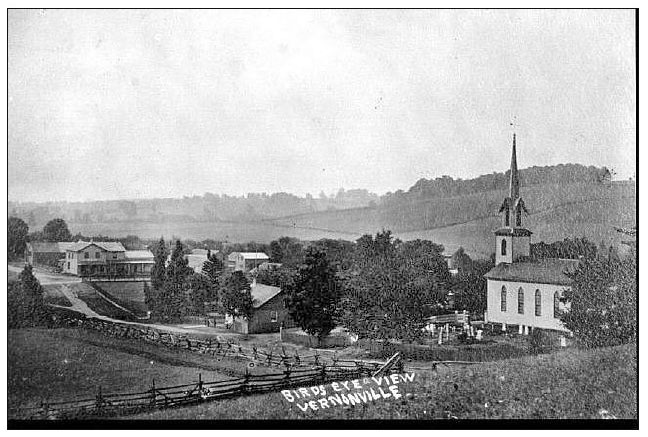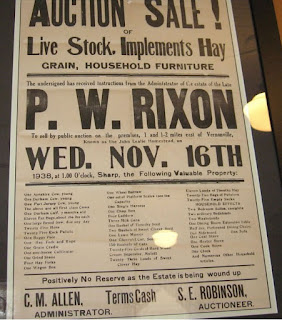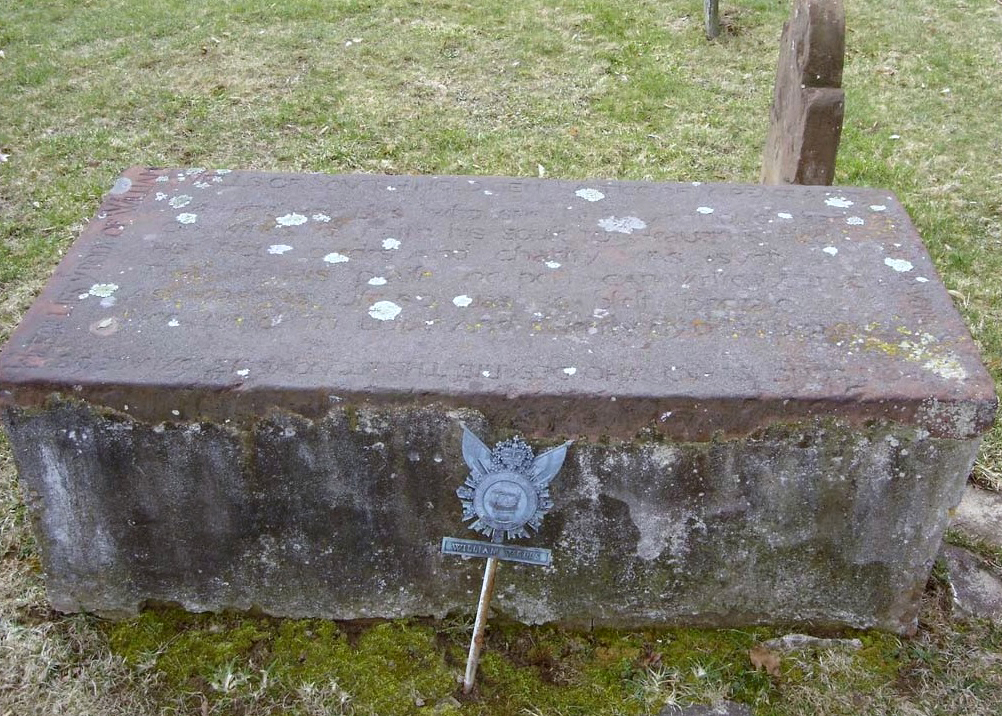Do you have a photo of Phineas? I am writing a family history book, and would love to include his picture, but I’ve never come across one. If you can help, please contact me.
Farmer Phineas Rixon and his wife Barbara had been out doing errands in town. After they returned home, he was getting ready to do chores when he was stricken by a heart attack. The doctor came, but Phineas never regained consciousness. He died two days later, age 78, on Friday, September 9, 1938, on the farm he had operated for almost 40 years.
The local newspaper, The Colborne Express, reported, “the large number floral tributes and friends present [at the funeral] showed the high esteem in which he was held.”1
These few facts about his last days are the most detail I found about my great-great uncle’s long life. Phineas seldom moved far from his birthplace in rural Northumberland County, Ontario, a few miles from the shores of Lake Ontario. However, considering that his first two wives and his daughter predeceased him, and that he married a third time at age 76, his home life must have had its ups and downs.
Phineas (also spelled Phinehas, Phenas, and other variations) was born on May 8, 1859,2 the son of Martha Rixon and probably of her cousin Thomas Rixon.3 His unmarried mother moved to the United States when he was about nine, leaving him and his sister Samantha (my great-grandmother) to be brought up by their grandparents, Thomas and Betsey Rixon, on their farm in Cramahe Township.
It is not clear where Samantha and Phineas lived after their grandparent’s deaths; by then they were teenagers, and they likely stayed with relatives.
In 1878, Phineas joined the militia and was listed as a private in the 40th Regiment Northumberland. He next appeared in the 1880 U.S. Census (as “Fenis Rickson,”) working as a labourer in Michigan. He must have stayed in the United States for at least a year as he was not counted in the 1881 Census of Canada.
At age 24, he married 18-year-old Almeda Warner, daughter of John Warner and Harriet Morden. Phineas’s and Almeda’s daughter, Samantha Almeda Rixon (usually known as Mattie or Medie,) was born in June, 1884. Almeda died of typhoid fever in December, 1897, aged 32, leaving Phineas with a 13-year-old to raise and a farm to run on his own.
Within four years, Phineas had remarried. The 1901 census showed Phineas, 41, married to Mary Leslie, 34. With them were his daughter, Mattie, 16, and Mary’s mother and her two sisters, both in their twenties. He had also moved from Cramahe Township to lot 6, Concession 4, Haldimand Township.4 An advertisement for an estate auction held soon after Phineas’s death said the auction would be held on the John Leslie Homestead, about a mile east of the village of Vernonville, so Phineas and Mary must have lived on what had been her parents’ farm.
Phineas and Mary were married for about 30 years. After she died in January, 1931, he remained single for the next five years. In May, 1936, he remarried. His third wife was a widow, Barbara Jemima (Haynes) Cowey.5
Phineas was buried in Castleton Cemetery, Cramahe, Northumberland County, with his first wife and his daughter. Medie, who was married in 1906 to farmer Claude Tweed and had six children, died in 1915. Barbara, died in 1939, age 73.
Photos: courtesy Gabrielle Blaschuk and Cramahe Township Public Library
This article is also posted on www.genealogyensemble.com
Sources:
- The Colborne Express, Thursday Sept. 15, 1938, p. 1.
- Year: 1901; Census Place: Haldimand, Northumberland (West/Ouest), Ontario; Page: 3; Family No: 26. Ancestry.ca, 1901 Census of Canada (database on-line, entry for Phineas Rixon, accessed Aug. 9, 2020,) citing Library and Archives Canada. Census of Canada, 1901. Ottawa, Ontario, 2004, Series RG31-C-1, Statistics Canada Fonds, Microfilm reels: T-6428 to T-6556.
- This complex story is recounted in the following two posts:
“The Ancestor Who Did Not Exist,” Writing Up the Ancestors, April 11, 2017,
https://www.writinguptheancestors.ca/?p=97
“Martha J. Rixon’s Short and Difficult Life,” Writing Up the Ancestors, May 14, 2017,
https://www.writinguptheancestors.ca/?p=95 - Reference Number: RG 31; Folder Number: 74; Census Place: 74, Northumberland, Ontario; Page Number: 7, Ancestry.com. 1921 Census of Canada (database on-line, entry for Phineas Rixon, accessed Aug. 9, 2020,) citing Library and Archives Canada. Sixth Census of Canada, 1921. Library and Archives Canada, 2013, Ottawa, Ontario. Series RG31. Statistics Canada Fonds.
- Archives of Ontario; Registration of Marriages 1936; Ontario, Canada, Marriages, 1826-1938, online database, Ancestry.ca and Genealogical Research Library (http://ancestry.ca, accessed Aug. 4, 2020,) entry for Barbara Cowey, citing Ontario, Canada, Select Marriages, Archives of Ontario, Toronto.



